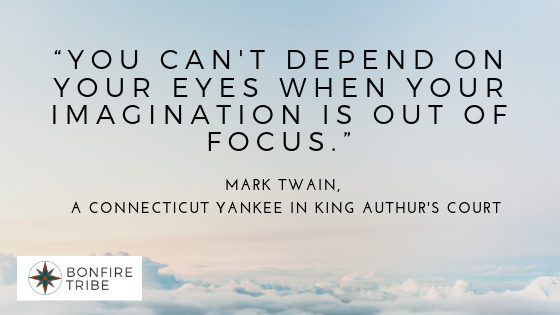
Bringing Good Boundaries Into Business
Generally speaking, the topic of boundaries in relationships is simultaneously boring and awkward. No one really wants to have this conversation. Maybe it’s because we assume new skills in relationships are going to uncomfortably rock the boat or we’re going to turn into stilted robots attempting intimacy. Awkward. Mostly, we just want everything to work in relationships without needing to learn new skills. Unfortunately, our relationships with each other (and our businesses) tend to be messy, so a little understanding about how we communicate can go a long ways in our personal lives, as well as business.
What is not a boundary?
Even though people talk about setting boundaries in relationships, many of us don’t know what boundaries actually mean. Perhaps we can identify big ones, such we don’t want our spouses to cheat on us, we don’t want people to steal, or we don’t want to feel betrayed by gossip. However, these “boundaries” don’t guide us much in our day to day life.
I used to resist the idea of setting boundaries, because I thought it meant sitting someone down and having some mysterious “boundary talk”. I imagined that setting a boundary meant that I had to know what the boundary was and painfully share it, repeating the process for each boundary. Not only does this sound exhausting, it sounds like a horrible experience for everyone. Thankfully, it’s not how it happens.
Also, when I talk about boundaries in the context of business, people will tell me they don’t want boundaries. They want to enter into a deep, trusting relationship with their clients and they presume that boundaries would get in the way. This is also not true. Healthy boundaries help us to be profoundly available for intimacy that wouldn’t be possible without the boundary.
So, what is a boundary?
A boundary is basically being able to identify what is you, what is me, and respecting the difference. Boundaries are naturally present when we are aware of a few simple things:
- My feelings, wants, and needs are mine to feel, understand, and share.
- I recognize that I do not know other people’s feelings, wants and needs, until they tell me and I verify that my understanding is correct.
- I accept that the other person doesn’t know what I feel, want and need unless I tell them and they verify that they understand what I said.
In other words: I feel me. You feel you. We share our reality and come to understand each other. A boundary is present between you and me when:
- I can say what is true for me based on what is actually true for me, free from influence of other’s wants and needs.
- I don’t presume to know what is true for another person without asking and listening without prejudice.
Pretty simple, right? Notice I didn’t say easy, but it is simple.
Healthy Boundaries
So, when you’re in a healthy relationship with clear boundaries, you can maintain awareness of what you’re feelings and what you need from the other to feel good. You know when your boundaries have been crossed by feeling anger that you can express without damaging the relationship. You can be open to feeling and expressing love for the other in the relationship, and express authentic gratitude when you’re given something wonderful. You’re standing on your own two feet, feeling and knowing your experience while staying in contact with the other through inquiry, deep listening, and expressing appreciation. In a relationship with boundaries, you know what part of your experience is you and what is not you.
What does this have to do with business?
Despite our best efforts, we are still human when we go to work and we are particularly human when we are in leadership positions, or when we feel particularly exposed and vulnerable. So, as humans, we bring our misunderstandings and poor behaviors around relationships with us. Poor relationships at work create inefficiencies, lost opportunities for growth and creativity, isolation, and emotional exhaustion from conflict. So, to explore how to experience clear boundaries, let’s look at each of the requirements for boundaries.
My feelings, wants, and needs are mine to feel, understand, and share.
This is the heart of boundaries – knowing what you feel, want and need and sharing it, as you deem appropriate. For the most part in our culture, we are not encouraged to actually know what we feel, want, and need, particularly when it comes to relationships. In addition, gender roles are in full play here. Men are discouraged from understanding and expressing their feelings and women are discouraged from understanding their needs, particularly needs that are independent of others. Marshal Rosenberg, author of the ground-breaking Non-Violent Communication, says that we are mostly illiterate when it comes to identifying our own feeling and needs. We may think we know how we want others to respond or behave, but we struggle to define the underlying need that’s driving our behavior. For example, when I was running Hi Point Coffee and Cafe, I would get so frustrated with employees who didn’t “just do their jobs.” My frustration, however, had relatively little to do with my employees’ behavior. I had a powerful need to rest, but I had limited awareness of my need. I interpreted my fatigue to be my employees’ fault by making me need to work more than I wanted. The truth was, though, that people did a good job for the most part and on the days that everything went smoothly, I still wasn’t taking care of my own need for rest. Had I been deeply aware of my need and taken responsibility for it, I would have had far more capacity to actually meet it, instead of suffering and blaming.
I recognize that I do not know other people’s feelings, wants and needs, until they tell me.
We humans like to tell stories to ourselves and others about what we “know” to be true about another person or people. Unfortunately, we are almost always wrong. We see behavior, hear words, and interpret what we experience through our own lens and create meaning from what we experienced. Mostly we do this without asking for more information. We’re just off to the races in our own minds. So, let’s say we experience someone saying something demeaning to us. We can take that bit of information and turn it into, “They are such an asshole. They think they are so much better than me, when it’s really me who’s putting in the extra effort. I’m so sick of them.” Or, we can remember that we don’t actually know how they feel and we can ask, “What did you mean by that comment. I’m confused.” The majority of the time, the “demeaning” comment was a misunderstanding or the person was feeling wounded somehow already in the relationship.
I accept that the other person doesn’t know what I feel, want, and need unless I tell them.
How many times have we all done this? We presume it’s so obvious what we feel and want that the other person should know already and should respond appropriately. Clearly, this is an impossible task that we ask of each other, since most of the time, we’re actually unaware of our own true feelings, needs, and wants. I’m not sure we need to look far for examples for this one. I’ve noticed at work that this is a common problem between employers and employees. When I was a young employee, I gave my bosses a lot of responsibility for meeting my needs for guidance and feedback without telling them. Once I became a boss, I recognized this dynamic, feeling employee expectations that I was unable to meet unless we were maintaining clear communication. Early on, I had an employee who quit in exasperation. She threw up her hands and walked out, because she was so tired of struggling to meet all of her obligations. I was surprised and told her I didn’t know she was struggling. She looked at me in total shock. How could I not know she was struggling? Well, she didn’t tell me. I knew she was working hard, balancing a lot of issues between school, work, and athletics, but I didn’t know what it was like for her. How would I know this, without me asking and/or without her saying. I assumed I knew what she felt and she assumed that I knew what she felt. In no way did these assumptions match.
A Simple Example
Boundary issues pop up wherever there are relationships in business; relationships with employees, customers, or vendors. For example, we may presume that a certain vendor is totally OK with our account being overdue, because they’ve always been so nice and haven’t said anything. Then all of a sudden, they demand their money in anger, and our once happy relationship is on the rocks.
What didn’t happen
- We didn’t communicate our need for extra time to pay the bill.
- We presumed to know that they were feeling OK, since they weren’t saying anything.
- They likely assumed that we actually would know that they were unhappy with the overdue bill and were perhaps telling themselves a story about how we didn’t care about their needs and feelings.
What could have happened
If we did communicate our need to pay late and asked about the impact of this action on our vendor, they would have had an opportunity to respond with sharing their own needs and feelings. Perhaps the delay would have been fine, or perhaps not. However, we could have made an informed choice that maintained the relationship. That’s boundaries in action. Simple, but powerful way that we maintain relationship through boundaries, not despite them. Boundaries actually allow relationships to be safe and resilient, instead of stiff or fraught with conflict. We tend to imagine people with strong boundaries as being rigid and difficult, but this is from a misunderstanding of what actual boundaries are. People who are practiced in knowing and respectfully expressing their feelings, wants, and needs mostly do not find themselves in conflict. They tend to be the people who know how to disarm a potentially difficult situation by inquiring about how the other people are feeling, acknowledging what they hear, and share about themselves in an honest way about their own needs in the situation. Boundaries are remarkably good for relationships, and therefore business. However, no one has ever said it’s easy.
Questions to Consider:
- How literate are you in defining your feelings throughout the day? Do certain situations shut you off from our emotions?
- How well do you understand what you need? Do your needs change in different situations? Hint: If your need is for others to behave a certain way, keep looking for what you need that isn’t dependent on other’s behavior. As in my example above, I needed rest, but I complained about my employees’ behavior. Of course these things were related, but my fundamental need was rest.
- Begin to watch for when you’re creating stories about what people are thinking, feeling, wanting when you actually don’t know. What happens to how you feel if you create an alternative story? Or if you ask for clarification?
- Do you assume that people know how you’re feeling? Is it possible that they have no idea? Is it possible that you don’t really know? What can you do to feel more understood?




